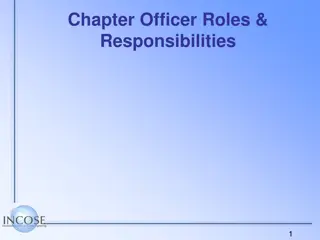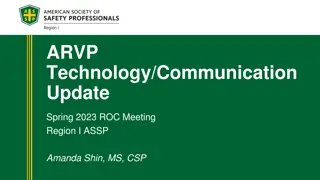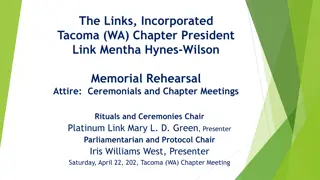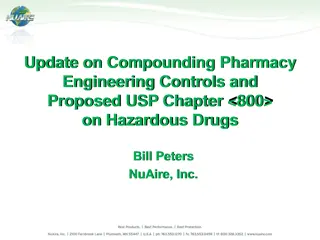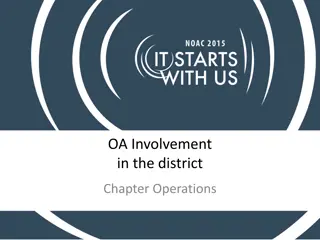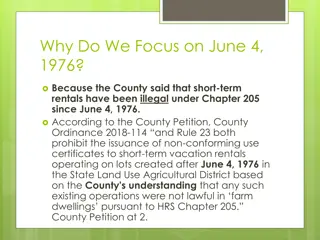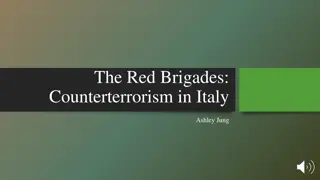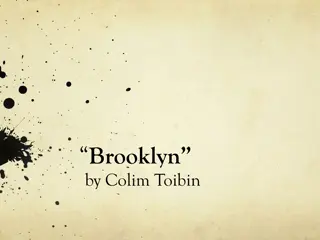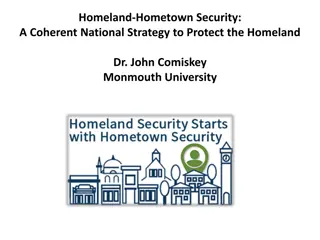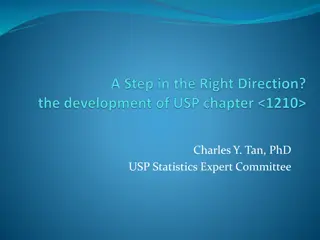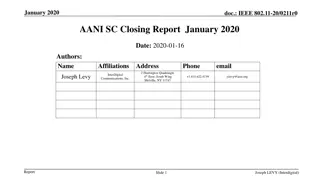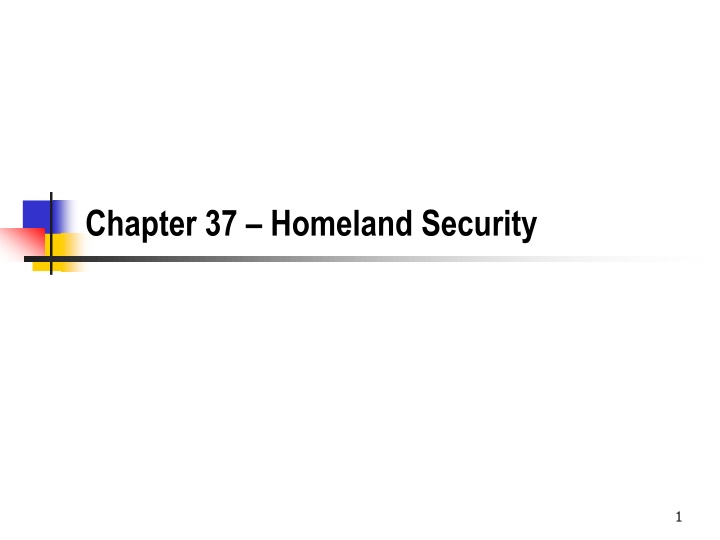
Public Health History and Legal Framework
Explore the evolution of public health from ancient times to colonial America, examining the roots, challenges, and legal actions taken. Discover the constitutional implications and responses to epidemics like the 1798 Yellow Fever outbreak.
Download Presentation

Please find below an Image/Link to download the presentation.
The content on the website is provided AS IS for your information and personal use only. It may not be sold, licensed, or shared on other websites without obtaining consent from the author. If you encounter any issues during the download, it is possible that the publisher has removed the file from their server.
You are allowed to download the files provided on this website for personal or commercial use, subject to the condition that they are used lawfully. All files are the property of their respective owners.
The content on the website is provided AS IS for your information and personal use only. It may not be sold, licensed, or shared on other websites without obtaining consent from the author.
E N D
Presentation Transcript
History of Public Health/Police Power 2
The Roots of Public Health Leviticus Roman water and sewer works Early Renaissance Venice quadraginta Blackstone Death for breaking quarantine 3
Public Health in the Colonies Most of the population lived in poorly drained coastal areas Cholera Yellow Fever Urban Diseases Smallpox Tuberculosis Average life expectancy was short 4
Public Health Law Actions in Colonial America Quarantines, areas of non-intercourse Inspection of ships and sailors Nuisance abatement Colonial governments had and used Draconian public health powers The Police Powers 5
Public Health in the Constitution Federal Powers Interstate commerce International trade and travel War State Powers Powers not given to the federal government Police Powers How broad are the state's police powers? 6
Actions in the 1798 Yellow Fever Epidemic For ten years prior, the yellow fever had raged almost annually in the city, and annual laws were passed to resist it. The wit of man was exhausted, but in vain. Never did the pestilence rage more violently than in the summer of 1798. The State was in despair. The rising hopes of the metropolis began to fade. The opinion was gaining ground, that the cause of this annual disease was indigenous, and that all precautions against its importation were useless. But the leading spirits of that day were unwilling to give up the city without a final desperate effort. The havoc in the summer of 1798 is represented as terrific. The whole country was roused. A cordon sanitaire was thrown around the city. Governor Mifflin of Pennsylvania proclaimed a non- intercourse between New York and Philadelphia. (Argument of counsel in Smith v. Turner, 48 U.S. (7 How.) 283, 340-41 (1849)) 7
Deference to Public Health Expertise St. Mark's Baths ... defendants and the intervening patrons challenge the soundness of the scientific judgments upon which the Health Council regulation is based .... While these arguments and proposals may have varying degrees of merit, they overlook a fundamental principle of applicable law: "It is not for the courts to determine which scientific view is correct in ruling upon whether the police power has been properly exercised. The judicial function is exhausted with the discovery that the relation between means and end is not wholly vain and fanciful, an illusory pretense. 8
Is there a Constitutional Right to a Hearing before the Health Department Acts? Classic Food Sanitation Case - North American Cold Storage Co. v. City of Chicago, 211 U.S. 306 (1908) Post-action hearings can satisfy due process It is left to the regulated party to request a court hearing Is this a taking - Must the state pay for the chicken? 9
What if You are Locking Up People? Must there be a hearing first? Not under the US Constitution Some newer state laws require a hearing Must there be a statutory provision for a hearing? The Constitution provides habeas corpus Right to contest your confinement Limiting habeas corpus The state can require an agency review first 10
Acting in an Emergency Power expands with necessity Courts do not block emergency actions Knowing what to do is what matters Emergency powers laws are easy to pass, but do not solve resource and expertise problems Law matters a month after The more laws you pass, the more loopholes you can create 11
The Limits of Public Health Law Public health law can only be used to prevent future harm Public health law cannot be used to punish for past behavior Punishment triggers criminal due process Historically the harm was clear and fairly certain, and was to physical health and safety Where does modern touchy feely public health fit in? 12
Why does Punishment Trigger Special Protections? Criminal law has a long history of abuse by tyrants Takes liberty or even life Searches undermine an individual's sense of autonomy Can deprive the individual of the means to oppose the state s actions 13
The Separation of Public Health and Law Enforcement Constitutional bright line between criminal law and public health Different standards for proof Different standards for due process Different goals for restrictions and confinement Public Perception Public health wants cooperation and trust Police want fear and respect 14
Criminal Due Process Versus Public Health Rights No right to appointed counsel Probable cause is not necessary - area warrants Informal adjudications Can use general powers Proof by a preponderance of the evidence Right to appointed counsel Must have probable cause for warrants Trial by jury Requires specific laws Standard of proof is beyond a reasonable doubt 15
Is there a Federal Police Power? Constitutional Debate US Supreme Court says no, but ... Can the Feds do local disease control? CDC only comes in at the state's invitation Is everything interstate commerce now? Can the Feds require smallpox vaccinations? Invasion Clause? Insurrections? What is the role of forensic epidemiology? 17
Federal domestic powers (traditionally commerce clause) Quarantine/Isolation Travel restrictions A few federal vaccination requirements tied to specific occupational risks 18
The Stafford Act, as amended, 42 U.S.C. 5121-5207 (2018 & Supp. I 2019) 19
What is the reach of the Stafford Act? may be invoked in the event of a presidentially declared major disaster or emergency, including any natural catastrophe : : : or, regardless of cause, any fire, flood, or explosion, when the President finds that the situation is of such severity and magnitude that effective response is beyond the capabilities of the State and the affected local governments and that Federal assistance is necessary. Who decides when a disaster merits a declaration? Can the president make a declaration without a state request? 20
The Homeland Security Act and Related Directives 21
Reorganization of the Federal Agencies The Act required the Secretary to consolidate existing Federal Government emergency response plans into a single, coordinated national response plan. Id. 312(6). It merged all or portions of 22 federal agencies and 180,000 employees into the DHS. Included were the Coast Guard, Customs Service, Transportation Security Administration, FEMA, Secret Service, parts of the Immigration and Naturalization Service, and a long list of less well-known federal entities. The Act designated DHS as the lead agency for coordinating disaster and emergency response and recovery assistance with state and local authorities. 22
Role of Homeland Security It declares that the Secretary of Homeland Security is the principal Federal official for domestic incident management. Id. {(4). The Secretary of Health and Human Services (HHS) shares responsibility with DHS for biological incidents, while the Attorney General is given lead responsibility for criminal investigations of terrorist threats or acts within the United States, and is directed to coordinate the activities of other members of the law enforcement community to detect, prevent, preempt, and disrupt terrorist attacks against the United States. 23
Limits on the Military in Law Enforcement The Constitution puts the military under civilian control There has always been a fear that the president would use the military for political purposes in the states The military was used to put down several insurrections in the early constitutional period 24
1878 Posse Comitatus Act Prevents the use of the military for domestic police work Specifically precludes troops from becoming directly involved in search and seizure, and arrest, or other similar activities. Congress amended the Act to allow limited cooperation with civilian law enforcement through surveillance and leasing equipment. Not a constitutional limit 25
Revisiting Posse Comitatus Does not limit non-police help, such as crowd control Does not apply to National Guard units under state control Used as logistic support in floods and other natural disasters Remember Kent State? Has an exception for insurrections Remember Little Rock? 26
Does Posse Comitatus Apply to Public Health? Under traditional constitutional analysis, public health powers cannot be used to punish Punishment is the defining characteristic of criminal law While it has not been tested, there should not be any legal impediment to using the military for classic public health 27
FIRST RESPONDERS: STATE AND LOCAL RESPONSES 28
State and local emergency declarations Why was 9/11 easy and Hurricane Katrina hard? What is the problem with handing off authority to the feds under the National Response Framework? Why must it be a vague document? What is the difference between authority, competence, and resources? 29
Potemkin Plans Potemkin Village After Grigori Aleksandrovich Potemkin, who had elaborate fake villages constructed for Catherine the Great's tours of the Ukraine and the Crimea. Potemkin Plans Elaborate plans for public health emergency preparedness that cannot be carried out because of lack of staff, resources, political will, competence, or any combination of the above. 30
The Planning Imperative For the feds, plans = action Federal push down requiring elaborate plans on every crisis de jure, with federal programmatic funding depending on the right answers in the plan State legislators do the same to their own state and local governments 31
Post-Katrina Plans The Lesson from Katrina We need more plans Translation - The Feds want to better document how the next screw up is your fault The plans have to address all the federal target issues and have to say that the state and localities are prepared to carry out the functions Why the feds think this is working
What is the Structural Problem? National is the wrong level for emergency response All state and local public health, police, and other first responders are already committed about 110% There have been net cuts in most programs as emergency response has been added Existing problems like crime and disease control do not go away during disasters
How Did This Become a Legal Problem? HHS and CDC believe that the problem with emergency preparedness is that we do not have enough laws Model State Emergency Health Powers Act The CDC/RWJ Model Law Movement Laws are cheap and easy to pass Fixing budgets, staffing levels, and competence for state and local departments is way too expensive and troublesome
Why Should You Care About Potemkin Plans? Could you do a plan that works instead of the Potemkin Plan? What is the effect on risk communication to the at risk communities? Does the plan provide false assurances? If communities were given honest risk information, would they make different decisions?
Pan Flu Examples Address the real issues like food, water, realistic rationing decisions, etc. Prepare and respond properly to the yearly pandemic Deal with universal access to health care Admit that we are choosing cheap over safe because we do not want to fund contingent risks outside of the military.
Small Pox The Real Worst Case 37
Smallpox Basics Pox virus Stable as an aerosol Infectious at low doses Human to human transmission through coughing and contaminated items (fomites) 10 to 12 day incubation period High mortality rate (30%)
Co-Evolution Smallpox infects humans only Could not survive until agriculture No non-human reservoir If at any point no one in the world is infected, then the disease is eradicated Infected persons who survive are immune, allowing communities to rebuild after epidemics
Eradication Driven by the development of a heat stable vaccine 1947 last cases in the US Smallpox vaccine was given to everyone in the US until 1972 Worldwide eradication campaign in the 1970s
Eradication Ended Vaccinations Cost Benefit Analysis Vaccine was Very Cheap Program Administration was Expensive Risks of Vaccine Were Seen as Outweighing Benefits Stopped in the 1970s
Complications of Vaccination Local Lesion Progressive/Dissemi nated Vaccina Deadly Encephalitis Most common in the immunosuppressed
How Have the Risks of Vaccination Changed Since 1970? 1970 1/1,000,000 deaths 5/1,000,000 serious complications Immunosuppression was rare in 1970 2004 Immunosuppression is common HIV, Chemotherapy, Arthritis Drugs Tolerance for risk is much lower
Post Eradication 50%+ in the US have not been vaccinated Many fewer have been vaccinated in Africa Immunity fades over time Everyone is probably susceptible Perhaps enough protection to reduce the severity of the disease
The Danger of Synchronous Infection The whole world may be like Hawaii before the first sailors If everyone gets sick at the same time, even non- fatal diseases such as measles become fatal A massive smallpox epidemic would be a national security threat Is a massive epidemic possible?
The Dark Winter Model Johns Hopkins Model - 2001 Simulation for high level government officials Assumed terrorists infected 1000 persons in several cities Within a few simulated months, all vaccine was gone, 1,000,000 people where dead, and the epidemic was raging out of control
Response to the Dark Winter Model Koopman worked in the eradication campaign Smallpox is a barely contagious and slow- spreading infection. Lane ex-CDC smallpox unit director Dark Winter was silly. There s no way that s going to happen.
Decomposing the Models Common Factors Population at risk Initial seed Transmission rate Control measures under study
Population at Risk Total number of people Compartments - how much mixing? Immunization status Most assume 100% are susceptible Increasing the % of persons immune to smallpox Reduces the number of susceptibles Dilutes the pool, reducing rate of spread


